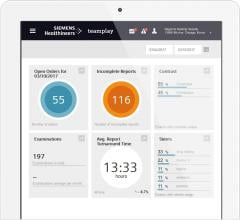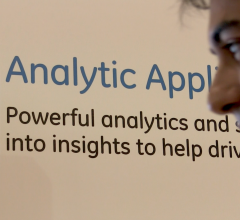
Memorial Hospital has increased efficiency using a single cardiovascular information management database.
Located along Mississippi’s Gulf Coast, Memorial Hospital at Gulfport is a nonprofit, 445-bed facility originally established in 1946. More than six decades later, it is the main cardiovascular and neurotrauma care provider in the region. To stay on top of a rapidly changing healthcare industry, the hospital uses the latest single-database McKesson Cardiology cardiovascular information system (CVIS) from Change Healthcare, bringing together its reporting from across all cardiac modalities.
Assessing Needs
Prior to the initial purchase of McKesson Cardiology in 2006, Memorial Hospital was already using a variety of the McKesson products across the board.
“We were really looking for an integrated or interfaced product that could manage all of our modalities, no matter what the brand was,” said Kathleen Morrow, cardiovascular informatics manager at Memorial Hospital.
In the hospital’s invasive and noninvasive units, GE, Philips and Siemens systems are utilized, and the goal was to incorporate the new product into the cardiovascular picture archiving and communication system (C-PACS). For Memorial Hospital, it was essential the CVIS was vendor-neutral, and it wanted structured reporting and the ability to interface the software to its registries and hospital information systems. After careful consideration, Memorial determined McKesson Cardiology to be the best solution available.
Prior to this decision, the hospital only had one digital imaging service for the cath lab through another cardiology system. Morrow said they considered expanding that service, but it did not offer a hemodynamic product that was integrated enough for the hospital’s needs.
Going Ahead with CVIS Adoption
Initially, Memorial Hospital had planned to implement McKesson Cardiology at its facility in the summer of 2005, but the havoc wreaked on the Gulf Coast by Hurricane Katrina that August put everything on hold. By the end of 2006, the hospital was ready to pick up where it left off, and the CVIS was implemented in February 2007, with the facility also digitalizing all of its imaging. Memorial Hospital implemented echo reporting in May, and nuclear medicine (stress tests) reporting in June. McKesson Cardiology Hemo monitoring was installed in the cath lab in July. The hospital was a beta site for the Hemo Nurse Charting Station in the cath lab in September. In October 2007, the hospital went live with cath reporting. Shortly thereafter with systematic rollouts, the hospital added vascular reporting.
When all of the data was migrated over to the McKesson Cardiology CVIS, the hospital was upfront with physicians about the new operations. “When we went with McKesson, we made sure all of our cardiovascular physicians understood and agreed to do structured reporting,’” Morrow said. “In this instance we made sure that we had seen the product and knew how it worked.”
She said that Memorial Hospital was one of the first sites that was able to roll out 100 percent reporting on 100 percent of its studies. “Working closely with [McKesson], we helped them understand what should be in the respective reports and where deficits existed. And they worked with us to fill those deficits and make sure everything was well reported,” she said.
Documentation and Reporting Benefits
Use of the single-database McKesson Cardiology CVIS has allowed Memorial Hospital to maintain documentation and pull statistical reports for a range of functions. Because the hospital has an interface to its registry software, everything a physician inputs is automatically entered — meaning someone does not have to manually review the chart and dig for all the information.
In one example Morrow gives, the hospital — a participant of the American College of Cardiology’s (ACC) CathPCI Registry — noticed data needed for the registry was occasionally missing from the physician reports. Memorial Hospital made certain that these fields in the Change Healthcare system were mandatory. By doing this, physicians could not skip these fields, increasing the efficiency and completeness of the data. As soon as a physician signs off on a report, that report is immediately available for everyone to see in the medical record.
The CVIS has given Memorial Hospital the opportunity to review images dating back to 2001, and remote cardiologists are able to read studies from their office or home without having to come on site. Morrow said the hospital has a few non-interventional cardiologists, who are not physically based at the hospital, who solely read studies remotely. A partnership with a university medical system allows Memorial Hospital to work with specialized pediatric cardiologists located off site, giving them the ability to login remotely and read studies anywhere to determine optimal cardiology pediatric patient care.
Morrow said the system has also made it easier to run volumes, giving them the ability to see who is doing what procedure and where. Reports can be run to help with billing, coding and inventory management. Supply usage reports are run daily to assist with what needs to be reordered for the cath lab. Additionally, prices can sometimes be leveraged with vendors by pulling data to show who uses what percentage of products. The hospital uses information from the system to see what services are most utilized to ensure it is meeting the needs of the community, both the public and the providers. The system can even send out reports to providers to remind them when to follow-up with patients. Every morning between 4 and 7 a.m., daily reports begin to go out, according to Morrow. “When people get to their desks, they have the information they need to care for their patients.”
Savings and Efficiencies
The digitization of its imaging studies and implementation of the single-database CVIS has enabled Memorial Hospital to reap some substantial benefits such as cost savings and quality improvement, said Morrow. Now that the facility no longer handles physical VHS tapes containing patient studies, techs can immediately have access to patient records that can indicate the last time they had a certain test done. This helps in preventing unnecessary or duplicated patient studies — a huge cost savings for the hospital.
Morrow also feels that the use of the CVIS has allowed for improved efficiencies and quality. “We are able to monitor the usage of equipment and practices, and the doctors can more efficiently report,” she said. “The doctors can perform more studies per day because they are not spending as much time putting together the reports.” Studies are being better compared now that they can be pulled up side-by-side. For example, physicians can look at a patient’s stress test from a previous year and compare it to current results.
The robust McKesson Cardiology CVIS offering has provided Memorial Hospital with an interfaced and integrated solution that has worked for them long-term. Thanks to being able to provide comprehensive access to cardiovascular studies, robust and time-saving procedure reports, and the ability to obtain efficient and accurate statistical information, the hospital has been able to provide the highest level of cardiac care to its patients
and providers.
For more information: www.changehealthcare.com


 February 15, 2022
February 15, 2022 









